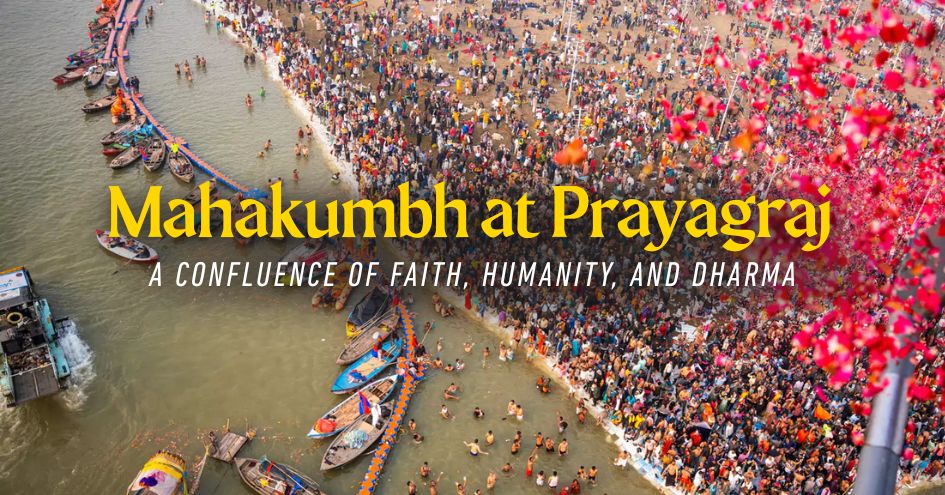
In February 2025, I found myself standing on the banks of the Ganga, in Prayagraj. The exact spot of the sacred Triveni Sangam, where the Ganga, Yamuna, and the mystical Saraswati merge stood across the river, shimmering in the distance. It was early morning, that magical hour just before the sunrise, casting molten gold across the waters.
I had read about the scale of the Mahakumbh, about the crowds, the divinity. But nothing prepared me for the staggering immensity of it all. Around me, an ocean of humanity—men, women, sadhus, children—moved with a quiet purpose. Some chanted mantras, others sang bhajans, many simply stood in knee-deep water with closed eyes and folded hands, their lips murmuring the same prayers their ancestors did for thousands of years, in the same language, in the same cadence.
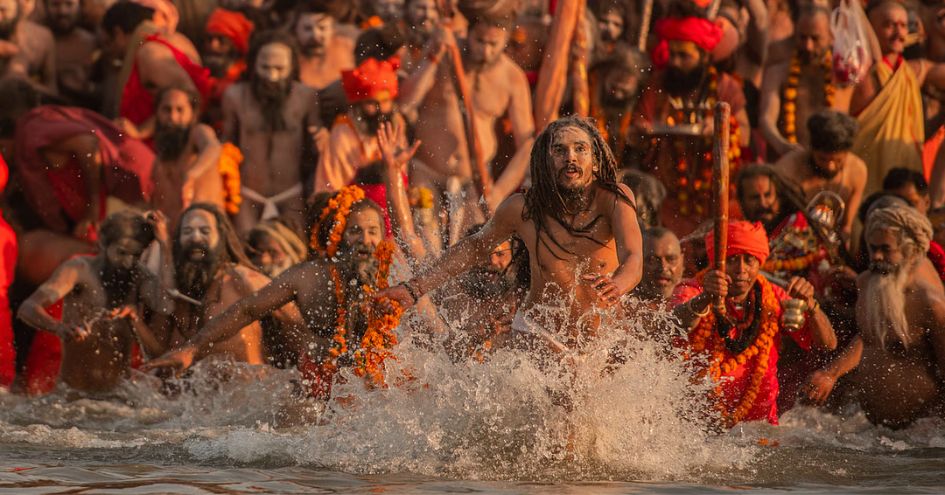
There was a palpable energy there, a spiritual charge that was hard to describe but impossible to miss. This was the Mahakumbh, the largest gathering of human beings on the planet, a spiritual confluence that was said to have occurred after 144 years. And I was one among the crores who have arrived to witness and participate in this epic convergence of faith and identity.
The statistics were staggering—over 150 million pilgrims were expected to take a ritual bath over the course of the MahaKumbh, three times that number actually came. To put that in perspective, that was more than the population of most countries in the world. And yet, there were not too many incidents of stampedes, chaos or confusion. The entire event was orchestrated with astonishing efficiency with the local and central government pitching in as equal partners.
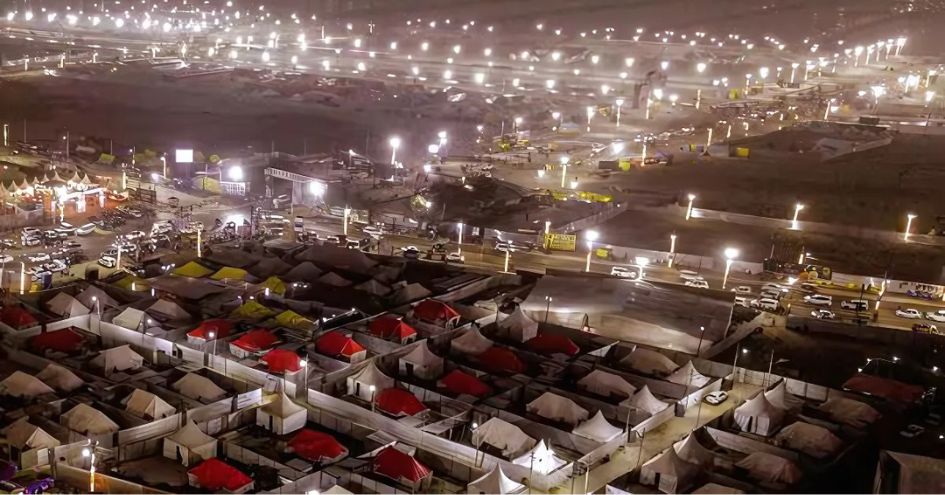
The arrangements defied belief. A temporary tent city the size of Chandigarh had been erected on the banks of the river. There were over 250 km of internal roads, thousands of portable toilets, free medical camps, countless water stations, and dedicated ghats for different groups. 4,000 state-run buses and hundreds of special trains were commissioned to ferry people from one place to another. Drone surveillance, thousands of CCTV cameras, and 40,000+ police and paramilitary personnel ensured round-the-clock security. There was a reassuring presence of uniformed men and women everywhere, helping the elderly, guiding the confused, keeping vigil at every entry point.
What struck me most, though, was the unrelenting focus on cleanliness. The moment devotees left the ghats after a ritual dip, cleanliness crew moved in with their brooms. I watched them sweep, scrub, and sanitise the very banks where people had just taken a dip. Loudspeakers periodically reminded pilgrims not to throw plastic, to avoid soap, to respect the sanctity of the river. The Kumbh had become not just a site of devotion, but a real-time case study of Swachh Bharat in action.
And yet, as always, all was not ideal. The price gouging by airlines and hotels left a sour taste. Airfare to Prayagraj, Varanasi, and even Lucknow shot up to three and four times the normal fare during key bathing days. Small hotels, which would normally charge ₹2,000 per night, were now demanding ₹10,000 and above for a basic room with a cot. For an event rooted in Dharma, simplicity, and accessibility, this commercial greed was jarring. Pilgrimage should never be a privilege of the rich. It’s unfortunate that some sought to turn devotion into an economic opportunity.
But nothing dimmed the undying faith of the devotees who travelled from far and wide for the kumbh. I met a barefoot couple from a tribal belt in Jharkhand. They had been walking for over 10 days, stopping at dharmashalas and temples along the way, surviving on simple food, but with unwavering smiles. “Yeh jeevan bhar ka sapna tha,” the husband told me, eyes shining. This sentiment repeated itself, again and again. As Sadhvi Bhagvati Saraswati of Paramartha Niketan put it so succinctly, that people came to the Mahakumbh for their Aastha, not Vyavastha alone. Faith, not facilities, fuels the Kumbh as it has been doing so for millennia.
The Mahakumbh is more than just a ritual bath. It is a living symbol of Bharat’s spiritual resilience. Where else in the world do millions of people come together without coercion, without incentives, without one central organiser, simply to affirm a shared belief in something higher than themselves?
Mahakumbh was a display of Bharat’s cultural unity in action. As I strolled along the ghats, I could hear a babble of multiple languages from Bharat and some languages of the world as well. The Kumbh didn’t just gather people from far and wide, it gathered hearts.
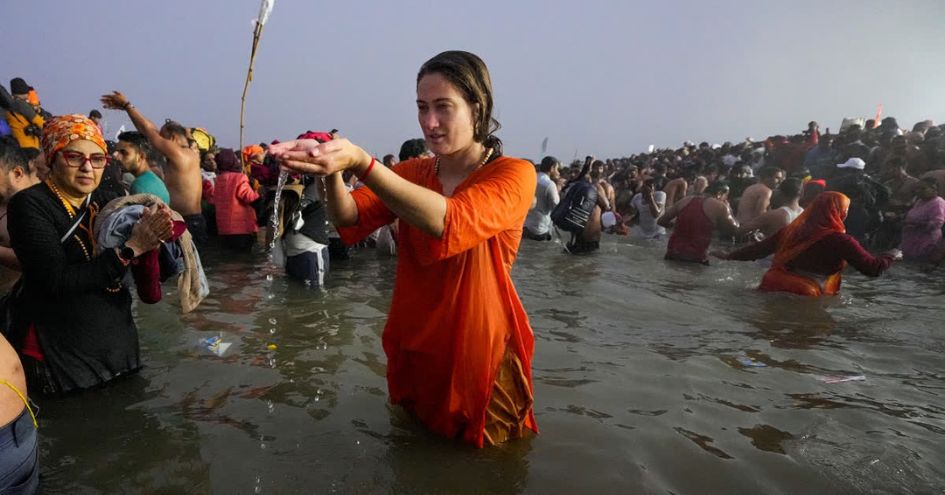
The actual moment of the ritual bath was a deeply transformative experience. There was something primal and cosmic about the moment I stepped into the icy waters of the Sangam. The chant of Har Har Gange echoed all around me. In the distance, someone blew a conch shell, another person behind me was offering Arghya to the rising sun chanting the Gayatri Mantra. As I sat down in the water and pulled my head under the current three times, I found myself melting into a river far larger than myself, far older than time. It was not just a bath; it was a shedding—of ego, of sorrow, of identity. In that moment, I was just one link in that eternal chain of values called Bharat. When I stepped out, shivering and wet, I felt like something invisible had shifted within me forever.
Amidst the noise, the chanting, the crowds, the raucous calling of the birds, the deep sound of helicopters buzzing overhead, I found myself experiencing the deepest silence within. As I watched the saffron flag flutter above a temple on the other shore, I was overcome not by religious pride but by civilisational awe. The Mahakumbh was not just about faith. This was about civilisational continuity. The same rituals, the same prayers, the same Sangam, witnessed by our ancestors, and now by us.
As I walked back to the shore, the sun was painting the sky with hues that no artist could recreate. There were gulls flying overhead. Boats carried pilgrims from one ghat to another. In a stunning moment of clarity, I realised what the Mahakumbh truly was. It was a mirror of Bharat, vast, unpredictable, flawed, yet deeply sacred. It was a reminder that despite everything—colonial erasure, political apathy, modern cynicism—our civilisational pulse still beats strong. Strong enough to gather millions of people on the banks of a river, just to immerse themselves into it’s waters with folded hands.
And in that moment, I too folded my hands—not just in prayer, but in gratitude. For being there. For bearing witness. For being part of something so timeless, so overwhelming, and yet so deeply, recognisably belonging to Bharat.
 Shefali Vaidya is a well-known Indian author, columnist, and social media personality based in Pune. She is a Director at TheVerandahClub.com and the curator of #WesternGhatsLitFest. She is a multi-lingual writer, proficient in English, Marathi, and Konkani, and contributes to various publications like Swarajya Magazine and OpIndia. Vaidya is recognized for her strong nationalist viewpoints, often writing and speaking on topics of politics, culture, history, and Dharma. She is a prominent voice on social media, known for her commentary on current affairs and for championing civilisational and Hindu causes. She is also a passionate advocate for Indian heritage, particularly handloom textiles, and has served on a special committee for the Ministry of Textiles to promote the sector.
Shefali Vaidya is a well-known Indian author, columnist, and social media personality based in Pune. She is a Director at TheVerandahClub.com and the curator of #WesternGhatsLitFest. She is a multi-lingual writer, proficient in English, Marathi, and Konkani, and contributes to various publications like Swarajya Magazine and OpIndia. Vaidya is recognized for her strong nationalist viewpoints, often writing and speaking on topics of politics, culture, history, and Dharma. She is a prominent voice on social media, known for her commentary on current affairs and for championing civilisational and Hindu causes. She is also a passionate advocate for Indian heritage, particularly handloom textiles, and has served on a special committee for the Ministry of Textiles to promote the sector.
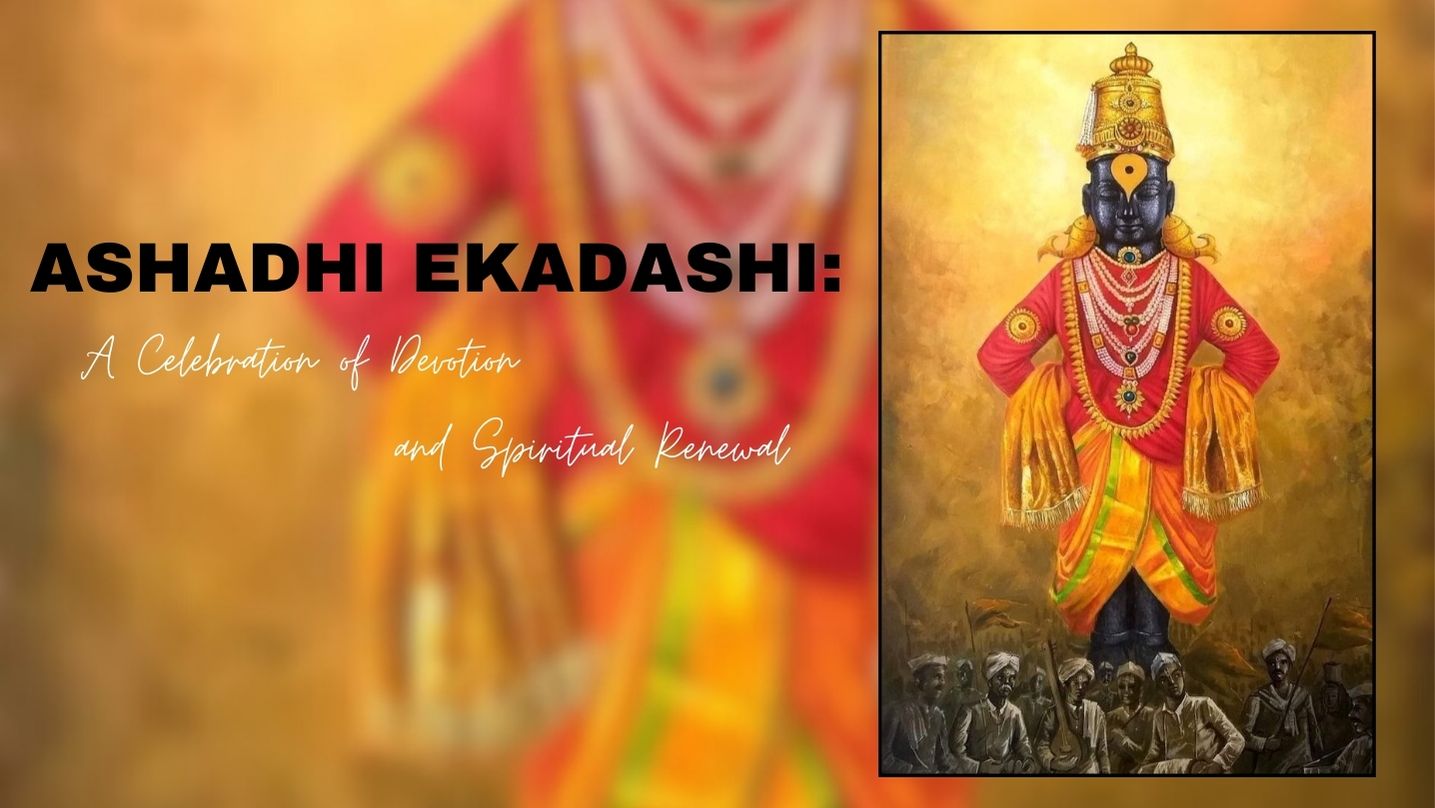
Ashadhi Ekadashi, also known as Shayani Ekadashi, falls on the 11th lunar day (Ekadashi) of the bright fortnight (Shukla Paksha) of the Hindu month of...
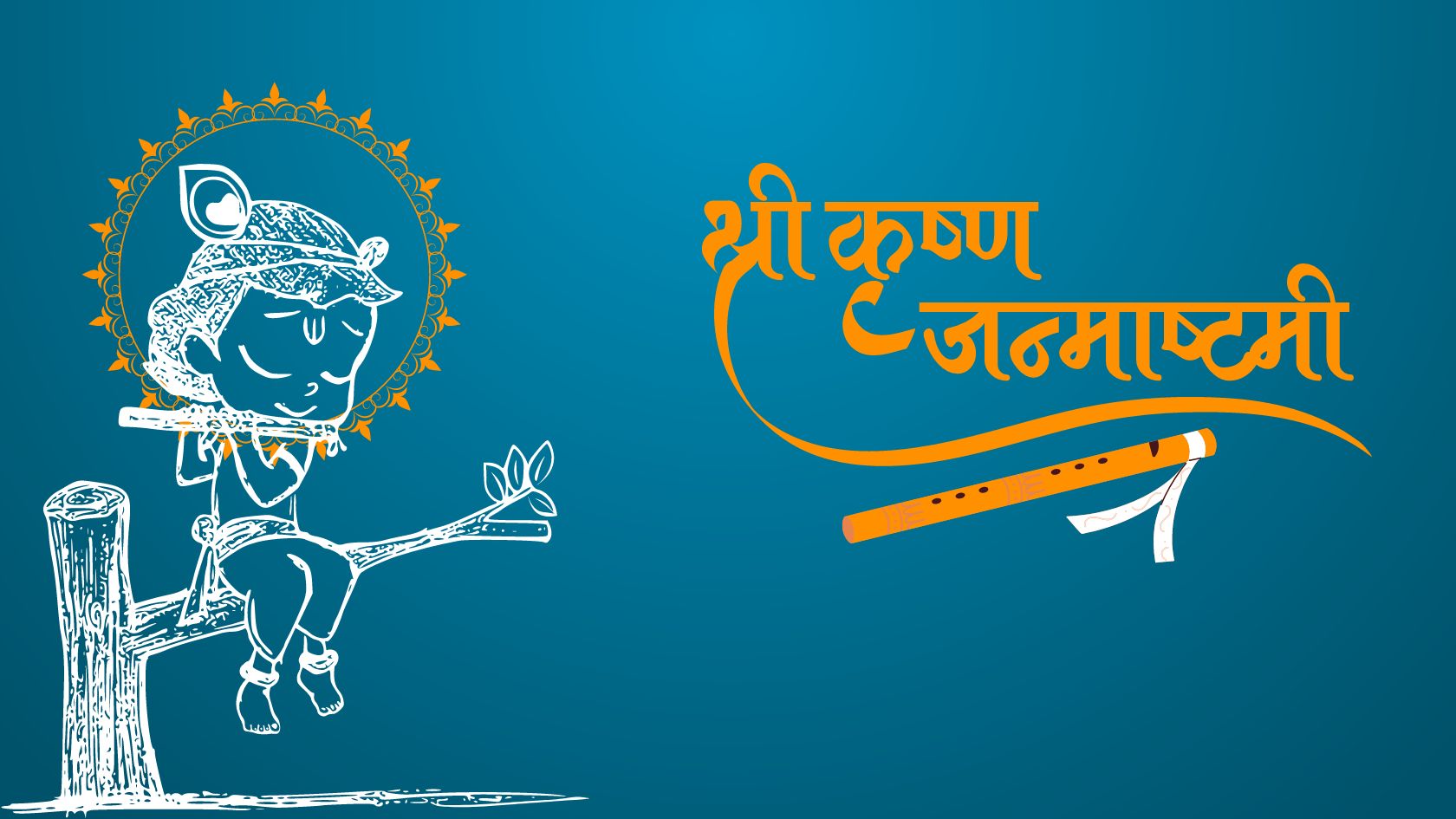
Every year, as the monsoon rains dance on the fields of India, an ancient story unfolds in the hearts of millions. It is the story of Krishna, the bel...
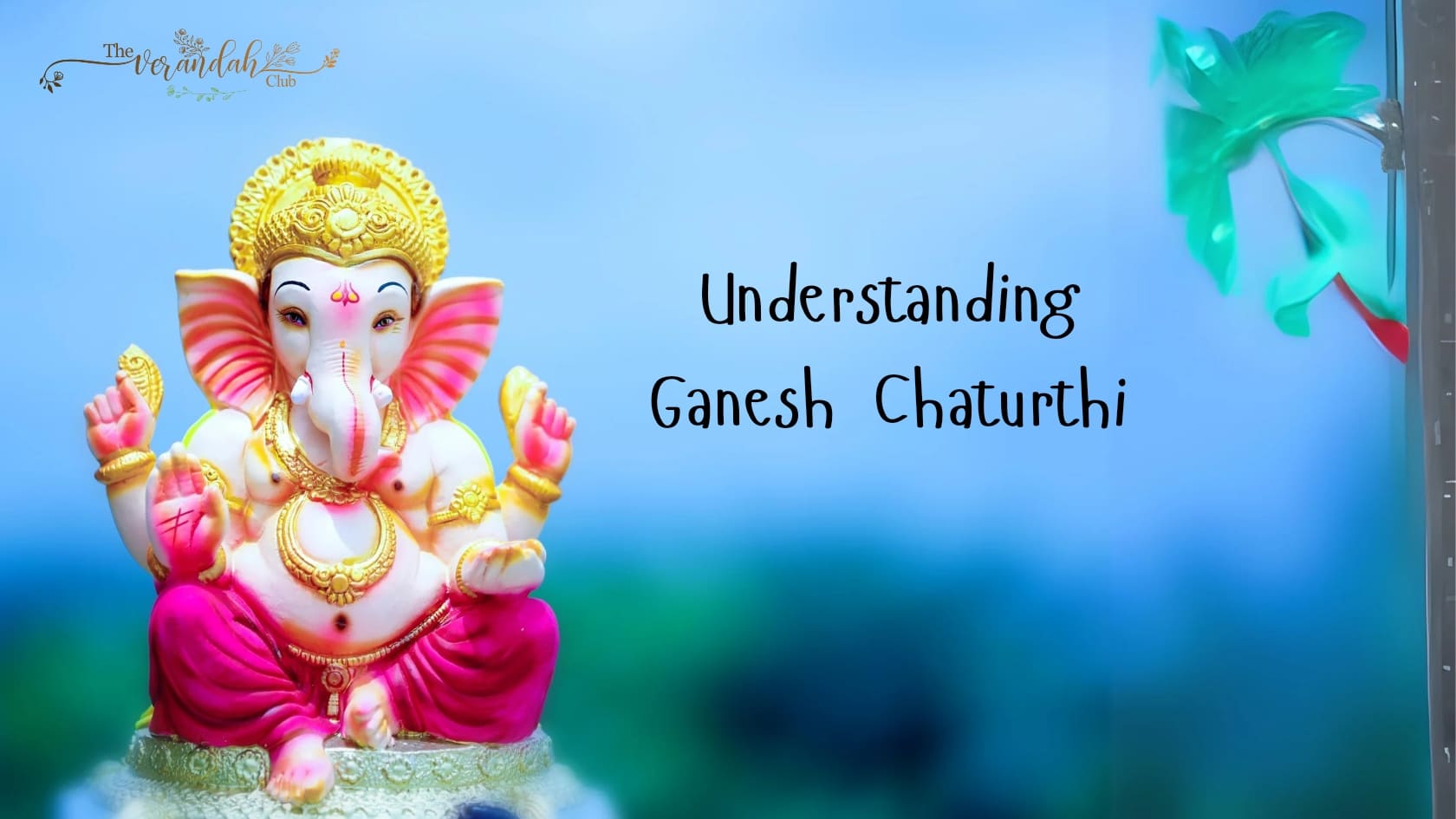
Ganesh Chaturthi, also known as Vinayaka Chaturthi, is a significant Hindu festival that honors Lord Ganesha, the deity revered as the remover of obst...